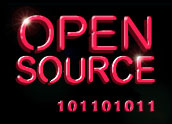
Open source and innovation are locked in a dynamic and symbiotic relationship.
Open source, community-based development evolved to meet developer needs for access and openness. While early open source represented innovation in development processes — and, of course, was enabled by the emergence of the Internet and Web search — it did not always result in innovation in terms of breakthrough new technologies.
Today, the dynamic has changed. As community-based development evolves and matures, communities and companies recognize the opportunity to apply this highly effective development process to their work. The realization that code reuse — assembling open source components into new applications and relying on open source to power new business models — drives innovation has been accepted. In the process, FOSS has, in some cases, changed the way we work, live and do business. Examples of “the great disruptor” can be found in mobile apps, gaming, collaboration apps, applications to manage big data, virtualization and cloud apps.
Scarcity and Abundance
An issue many organizations face is how to keep innovating in an environment of economic and skill scarcity. Interestingly, open source changes that equation too.
With open source comes abundance — more than 500,000+ projects are freely available today, and that number’s growing rapidly. Clearly the confluence between developers, communities and businesses turning to open source has provided a way for enterprises to grow and speed development, even with constrained resources.
Transparency = Engagement
The open source ethos of collaborative development leads to organizational transparency, which in turn leads to greater insight and engagement with IT, customers, partners the software supply chain and a business’ industry peers. In this model, software development centers on component reuse, the process of customizing and packaging one of the 500,000+ FOSS components out there to meet a business’ very specific needs.
Spending some time looking through those 500,000+ open source components, however, leads to the realization that only a small percentage may be applicable to a given business need. But even 10 percent relevance to a particular development effort represents a significant number of projects which need to be sorted through, understood and managed. Abundance is a positive thing, to be sure, but it also creates additional work and responsibilities.
Developers and product managers alike understand that most products can be built smarter and faster through open source development. These days, you must assume a product is enriched with third-party open source code.
Top to Bottom Innovation
If anyone out there is still questioning the strategic importance of open source software among enterprise development organizations, the findings of an Accenture survey provide another validation point that innovation in enterprise use of open source shows no signs of slowing down. Accenture is a global management consulting, technology services and outsourcing company (a competitor of Olliance Group).
Accenture’s survey of executives at 300 large organizations in both the private and public sector found that 69 percent expect to increase OSS investment. More than a third said they plan to migrate mission-critical software to open source by the end of 2011.
The reasons for greater use of OSS cited by respondents also point to a maturing marketplace. Cost savings have historically been the prime motivator, but that’s changed according to Accenture’s findings. Respondents cited software quality, improved reliability and better security/bug fixing as the top benefits, pointing to the growing strategic value of OSS.
Developers have been and continue to be the trailblazers and early adopters of FOSS, in addition to being chief advocates for more widespread usage across the enterprise. In fact, many developers and development organizations have been increasing OSS consumption for quite some time, but due to a lack of OSS policies within the enterprise have no mechanism for reporting, monitoring and managing usage.
Lack of senior management awareness and advocacy remain a key barrier, as opposed to developers. Once senior management becomes aware and accepts the fact that OSS plays a crucial role in the development process, the next logical step is to develop policies for usage, licensing, monitoring, reporting and contributing back to the community. Once these governance policies are in place, true innovation within open source can exist.
For companies refreshing their brands, or startups building products on a shoestring, open source and its many communities offer the opportunity to develop better products, faster. Speed to market comes via innovation and collaboration with partners, third-party developers and the greater FOSS community. Turning to open source to accelerate the development of projects and products not only makes it more cost-effective for companies to compete, but also unlocks a host of creativity by tapping the communities of developers in FOSS communities.
For many companies, the technological aspects of turning to open source are not as challenging as the organizational and cultural changes necessary to benefit from the innovation and creativity available from the FOSS community. The trick is to let the technology come quickly, see and realize the benefits of innovation and creativity from having a much broader participant base, and prepare the organization internally for the organizational and cultural changes necessary to spur innovation.












































